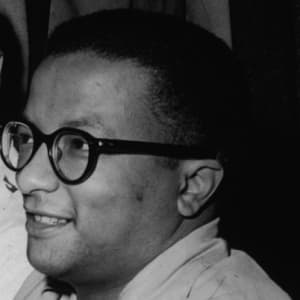
Maria Tallchief
Maria Tallchief was a revolutionary American ballerina who broke barriers for Native American women.
Synopsis
Born on January 24, 1925 in Fairfax, Oklahoma, Maria Tallchief was the first Native American (Osage Tribe) woman to break into ballet. Tallchief grew up in Los Angeles, California, where she studied ballet for many years. Her career as a ballerina spanned the globe and led to a short marriage to George Balanchine. She died on April 11, 2013, at age 88, in Chicago, Illinois.
Early Life and Career
Born Elizabeth Marie Tall Chief on January 24, 1925, in Fairfax, Oklahoma, Maria Tallchief was one of the country's leading ballerinas from the 1940s to the '60s. The daughter of an Osage tribe member, she was also a trailblazer for Native Americans in the world of ballet. Tallchief grew up in Los Angeles, California, where she studied ballet for years, working with Ernest Belcher and Bronislava Nijinska.
During her early career, in the 1940s, Tallchief danced with the Ballet Russe de Monte Carlo. It was also around this time that she became known professionally as Maria Tallchief, combining the two parts of her Indian name. In 1947, she became the first prima ballerina of the New York City Ballet—a title that she would hold for the next 13 years. That same year, Tallchief became the first American to dance with the Paris Opera Ballet. In addition to her work with the NYCB and Paris Opera Ballet, she was a guest performer with the American Ballet Theatre.
Around this same time, Tallchief met and became involved with the famed choreographer George Balanchine. The couple wed in 1946 and separated in 1951. While their marriage was short-lived, the two worked well together. After joining the New York City Ballet in 1948, Tallchief danced to Balanchine's choreography.
Famed Ballerina
Maria Tallchief quickly became a popular figure in ballet, performing in productions such as Orpheus, Scotch Symphony, Miss Julie, Firebird and The Nutcracker (performing as Sugar Plum Fairy). She also created roles for Orpheus and Scotch Symphony, both choreographed by Balanchine, among other plays he choreographed. In addition to wide fame, Tallchief earned strong reviews from critics for her technical precision, musicality and strength.
In 1957, Tallchief married Henry Paschen. After the birth of their daughter, Elise, in 1959, Tallchief took some time away from ballet. She eagerly returned to the stage, working on several more productions until her retirement in 1965. Thereafter, she became a ballet instructor and began serving as artistic director for the Lyric Opera Ballet. Later, she founded and became artistic director of the Chicago City Ballet.
Awards
In 1996, Tallchief became one of only five artists to receive the Kennedy Center Honors for their artistic contributions in the United States. That same year, the dancer was inducted into the National Women's Hall of Fame.
In 1999, Tallchief was awarded the National Medal of Arts, the highest award given to artists and arts patrons by the U.S. government, which honors individuals who "are deserving of special recognition by reason of their outstanding contributions to the excellence, growth, support and availability of the arts in the United States." (Other recipients of the award include Mikhail Baryshnikov, Harry Belafonte and Cab Calloway.)
Death and Legacy
Maria Tallchief died on April 11, 2013, at the age of 88, at a hospital in Chicago, Illinois. She was survived by her daughter, Elise Paschen, her sister and fellow ballerina, Marjorie Tallchief, and two grandchildren.
Following her mother's death, Paschen made a statement about her legacy as a Native American ballet dancer, teacher and artistic director: "My mother was a ballet legend who was proud of her Osage heritage," she said. "Her dynamic presence lit up the room. I will miss her passion, commitment to her art and devotion to her family. She raised the bar high and strove for excellence in everything she did."



